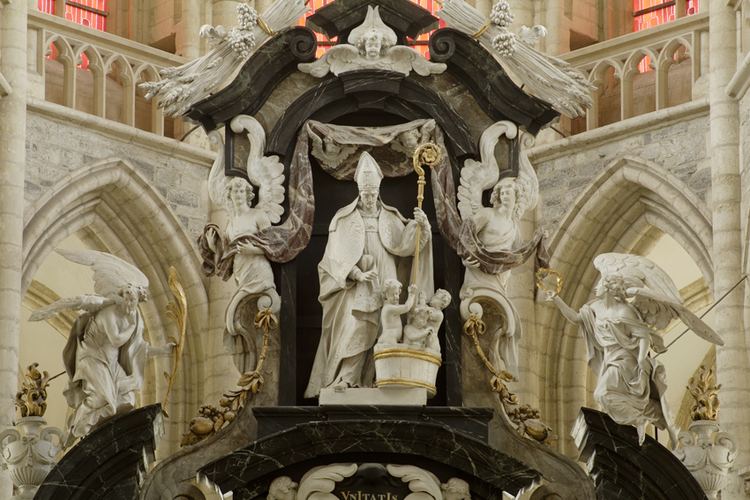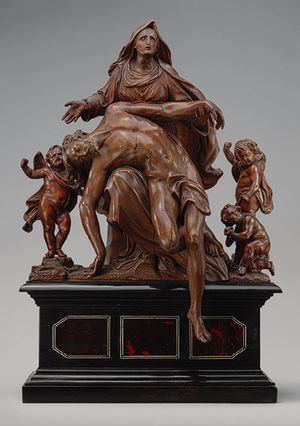Name Mattheus Beveren | ||
 | ||
Mattheus van Beveren (alternative names: Mathieu Van Beveren, Mathieu Beveren, Matthieu Beveren) (c. 1630, Antwerp – after 21 January 1696, Brussels) was a Flemish sculptor and medalist who is mainly known for his monumental Baroque church sculptures and small wood and ivory sculptures.
Contents

Life

Details about his life are scarce. He likely trained with the Antwerp sculptor Pieter Verbrugghen I. He joined the Antwerp Guild of St. Luke in 1649/50. He was the mint superintendent of Antwerp in the 1670s and 80s.
He married Suzanna Dooms, by whom he had a son named Judocus and a daughter named Catherina who married the flower still life painter Nicolaes van Verendael.
Mattheus van Beveren ran a large sculpture workshop with a significant output. Mattheus van Beveren was highly recognized for his artistic work and contributions as an instructor. He trained Jan Baptist Santvoort.
Work
Van Beveren was a versatile artist in terms of the subject range of his sculptures as well as the materials in which he worked. He executed monumental works in marble, stone and wood as well as small-scale works in wood, ivory and terracota. He further was a medalist and produced designs for dies for the Antwerp Mint. Van Beveren's style combines the classicist tendency of the Brussels sculptors Jerôme Duquesnoy (I) and his son François Duquesnoy with the baroque realism of his Antwerp contemporaries Pieter Verbrugghen II and Artus Quellinus the Younger who were more influenced by the style of Rubens.
His subject matter was mainly religious but he also worked on portraits and allegorical subjects. An example of the latter is the group of allegorical figures representing Virtue, Fame and Time created for the funerary chapel of Duke Lamoral of Thorn and Taxis (in the Our Blessed Lady of Zavel Church in Brussels) of which a terracotta model is kept at the Royal Museums of Fine Arts of Belgium in Brussels.
He executed the main altar in the St Nicholas Church in Ghent. He collaborated with some of the leading Flemish sculptors in the execution of large religious sculptures. He assisted Lucas Faydherbe with the painted wood and stone high altar in the St Rumbold's Cathedral in Mechelen. He made an Angel throne for the Antwerp Cathedral (1659-1660) after a design by Artus Quellinus the Younger.
His designs were used by his large workshop and other contemporary artists in the creation of numerous sculptures. The Brussels sculptor Jan Cosyns, for instance, sculpted the marble statues for the funerary chapel of Duke Lamoral of Thurn and Taxis after a design by van Beveren.
Matheus van Beveren was known for his small-scale works, and in particular his ivory sculptures. Beautiful examples are the Cupid on a lion in the Metropolitan Museum of Art and the Maria Apocalyptica in the Rijksmuseum. He and his workshop often used paintings by Rubens as models for numerous ivory crucifixes.
